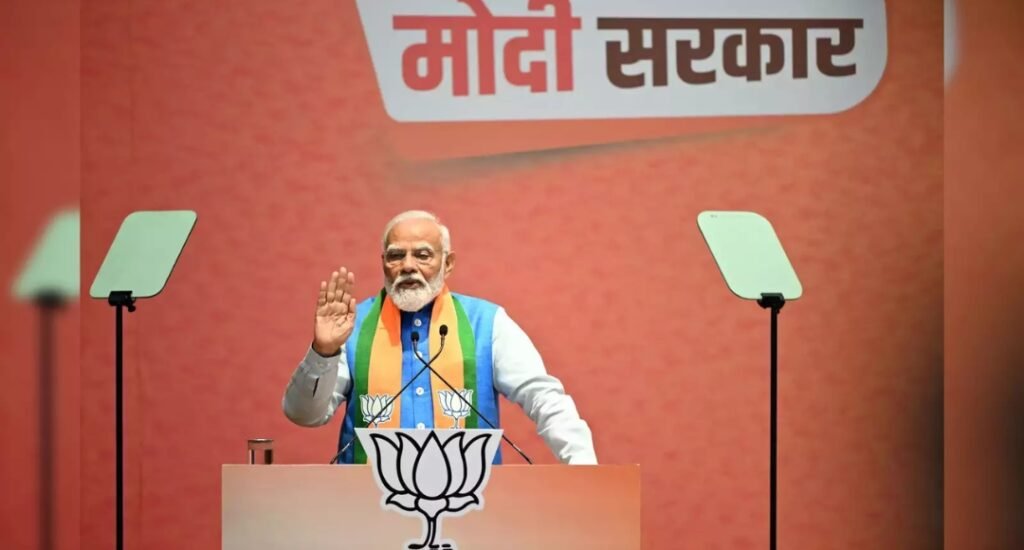The PM-Kisan Samman Nidhi Yojana, one of the flagship schemes of the Government of India, has been a significant support for millions of farmers. Introduced in 2019, this scheme provides direct financial assistance to farmers across the country. Recently, there has been widespread speculation about whether the government plans to increase the financial aid under the scheme. The matter was addressed in Parliament, shedding light on the future direction of the scheme.
What is the PM-Kisan Samman Nidhi Yojana?
The PM-Kisan Samman Nidhi Yojana is a welfare initiative introduced by the Government of India to provide financial relief to small and marginal farmers. Under this scheme, farmers receive ₹6,000 annually, distributed in three installments of ₹2,000 each. The funds are directly deposited into the beneficiaries’ bank accounts, ensuring a seamless and transparent process.
This scheme’s primary objective is to offer economic stability to farmers and help them manage essential agricultural expenses like seeds, fertilizers, and equipment. Since its inception, the initiative has positively impacted the lives of over 11 crore farmers, playing a pivotal role in enhancing their livelihoods and promoting agricultural growth across the nation.
Speculations About the Increased Assistance
With rising inflation and mounting input costs, there has been a demand from various farmer organizations and political leaders to increase the financial assistance under the PM-Kisan Yojana. Farmers argue that the current amount of ₹6,000 is insufficient to cover their agricultural expenses, which include fertilizers, seeds, labor, and equipment.
This issue gained further traction ahead of the Parliamentary session, with opposition parties urging the government to enhance the scheme’s assistance. The discussions in Parliament were closely followed by millions of farmers eagerly awaiting the government’s decision.
Government’s Response in Parliament

During the recent session of Parliament, the question of increasing the amount under the PM-Kisan scheme was raised. The government clarified its stance, emphasizing its commitment to the welfare of farmers while outlining the constraints involved.
- Current Allocation and Challenges
The Union Government stated that increasing the assistance amount would require a substantial rise in budgetary allocation. With the scheme already catering to over 11 crore farmers, any increment would significantly impact the exchequer. - Focus on Holistic Development
Instead of focusing solely on increasing the monetary assistance, the government highlighted its approach toward improving the overall agricultural ecosystem. This includes initiatives to reduce input costs, improve irrigation infrastructure, and provide farmers access to technology and credit facilities. - Digital Transformation of PM-Kisan
The government also mentioned its efforts to make the scheme more efficient and transparent. The introduction of Aadhaar linkage and the use of technology has minimized leakages and ensured that the benefits reach genuine farmers.
Future Plans for the Scheme

While the government did not announce any immediate plans to increase the financial assistance, it assured farmers of continuous support through various means:
1. Strengthening the Agricultural Sector
By investing in infrastructure, better seeds, and advanced farming techniques, the government aims to empower farmers and enhance their productivity.
2. Diversification of Income Sources
The government is promoting initiatives like animal husbandry, fisheries, and horticulture to provide farmers with additional income streams. These measures aim to reduce their dependency on traditional farming alone.
3. Insurance and Risk Mitigation
The government reiterated its focus on risk mitigation through schemes like Pradhan Mantri Fasal Bima Yojana (PMFBY), which provides crop insurance against natural disasters. This ensures financial stability for farmers in times of uncertainty.
4. State-Level Coordination
The Centre is collaborating with state governments to address region-specific agricultural challenges. The aim is to provide tailored solutions that benefit farmers on a broader scale.
Experts Weigh In
Agricultural experts believe that while increasing the monetary assistance under PM-Kisan would provide short-term relief, long-term reforms are more crucial. Addressing systemic issues, such as access to affordable credit, modernizing irrigation systems, and reducing dependency on chemical fertilizers, can create a more sustainable agricultural framework.
Some experts also suggest exploring the possibility of increasing the installment amount in phases rather than a one-time hike, which can balance fiscal responsibility with the needs of farmers.
The Farmer Perspective
For millions of small and marginal farmers, the PM-Kisan scheme is a lifeline. The assistance, though modest, helps meet essential expenses and provides a sense of security. However, many farmers believe that an increment in the assistance amount is necessary to match rising costs.
Farmers’ organizations have expressed mixed reactions to the government’s response. While some appreciate the emphasis on holistic development, others continue to push for an increase in financial aid under the scheme.





